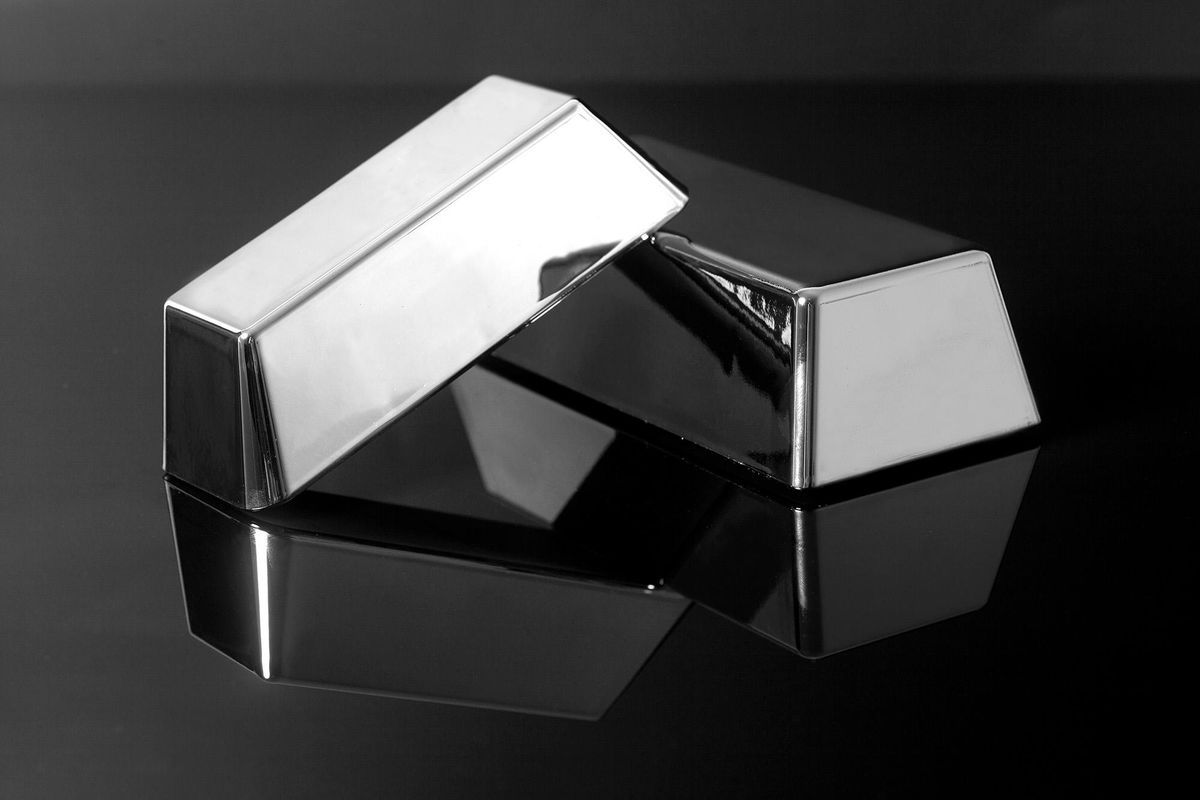Silver Investing in Australia
Silver is on the rise in Australia, with new silver mines opening, production potential booming and the precious metal's value staying strong.

Analysts have been bullish on gold for the better part of the past decade, but now it's silver's time to shine. While the price of silver tends to rise and fall alongside that of gold, silver's valuation is generally more volatile — slower to move in either direction than gold, but more prone to abrupt spikes and plunges.
Considering the market's longtime gold rush, silver is due for a major price hike. In 2020, silver hit a seven year high with 27 percent year-over-year growth, climbing faster than gold. Silver was on the rise again in February 2021, bolstered by WallStreetBets fervour. Though prices have fallen and stabilised since, they remain elevated compared to the past decade. Additionally, at only a fraction of gold's valuation, silver is a much more attainable buy.
Shrewd investors are looking to Australia for their silver picks. A country whose silver mines continued to flourish even when most of the world was in a precious metal slump, Australia has emerged from the COVID-19 pandemic as a major player in the global silver market.
How much silver does Australia produce?
When you think of mining in Australia, you may not think of silver, especially since the country is a top global producer of several other metals, including gold and iron ore. Nevertheless, silver is on the rise in Australia, with new silver mines opening, production potential booming and the precious metal's valuation reaching new heights.
This may be surprising news, especially since 2020 was an erratic year for silver. Global silver-mining production plunged by 5.9 percent in 2020 — its biggest drop in over 10 years — following four years of steady decline.
Output from primary silver mines plummeted by 11.9 percent year-over-year, while silver by-product suffered a more modest drop, with production from gold and lead-zinc mines falling by 5.7 percent and 7.4 percent, respectively. Note that silver is largely produced as a by-product of other metal-mining processes, with 72 percent of silver production taking place at non-silver mines.
This production downturn was the result of COVID-19 restrictions that forced mines to suspend operations temporarily. Silver mine closures hit certain places harder than others, with extended closures in top silver-producing countries such as Peru, Mexico, Argentina and Bolivia causing major production drops.
Australia, however, was an exception to this rule, with production increasing by 3 percent. The reason for Australia's success is that it remained relatively untouched by COVID-19 restrictions. While other countries were forced to shut down production facilities, Australia was able to avoid these closures, continuing — and even upgrading — regular operations.
Australia is now the fourth largest silver producer globally, with an annual output of 42.9 million ounces in 2021. While the output of silver-mining giants such as Mexico and Peru (196.7 million and 107.9 million ounces produced in 2021, respectively) continues to far exceed that of Australia, global demand for silver is on the rise, hitting 822 million ounces annually and making room for a new silver-mining powerhouse.
Where is silver mined in Australia?
Silver remains a relatively untapped resource in Australia, which means that investors have plenty of major mining companies to choose from.
Australia's largest mine is the Cannington mine owned by South32 (ASX:S32,OTC Pink:SHTLF). It is ranked as the ninth largest silver-producing mine worldwide, with 14.4 million ounces produced in 2021, a ramp-up of 24.1 percent from the year prior.
The country's second biggest silver-producing mine is the Mount Isa zinc mine. It is owned by Mount Isa Mines, a subsidiary of Glencore (LSE:GLEN,OTC Pink:GLCNF), and produced around 4.7 million ounces of silver in 2021. The Tritton copper mine, owned by Aeris Resources (ASX:AIS,OTC Pink:ARSRF), followed closely behind with around 4.3 million ounces produced in the same year.
Other notable Australian silver mines include the Golden Grove mine, which is owned by 29Metals (ASX:29M), and the Dugald River mine, which is owned by Metallic Minerals (ASX:MMG,TSXV:MMG,OTCQB:MMNGF). In 2021, these mines produced around 2.8 million and 1.9 million ounces of silver, respectively.
Australia's impressive silver-mining industry is well-positioned for further expansion, with Silver Mines (ASX:SVL,OTC Pink:SLVMF) planning to launch its Bowden silver project in 2023. This New South Wales-based silver mine is projected to produce around 5.4 million ounces of silver annually for the first few years, which would make it the country's new second largest producer. Silver Mines expects an average output of 3.4 million ounces over the project's mine life. The company hopes to capitalise on the promising solar panel market, which currently accounts for about 10 percent of all silver demand worldwide. That number could possibly reach 30 percent by 2030.
Moreover, Australian company Thomson Resources (ASX:TMZ,OTC Pink:TMZRF) bought the New South Wales-based Webb and Conrad silver projects from Silver Mines in 2021 in a transaction worth around US$8.6 million. The deal closed on March 31 and will enable Silver Mines to concentrate on its flagship Bowden project.
How can Australians invest in silver?
There are many ways to invest in silver, including physical silver, stocks, exchange-traded funds (ETFs), mutual funds, options and futures. Choosing which investment route to take is all about balancing risk and reward.
Investing in physical silver is the most straightforward option: you simply buy a tangible piece of the precious metal in the form of bullion, official coins or medallions. Bullion is a bar or round of solid silver with at least 99.9 percent purity. Rounds come in two forms, coins and medallions. Official silver coins are currency produced by a government mint, while silver medallions resemble coins, but lack monetary value.
The price of physical silver rises and falls alongside the metal's market value. Physical silver is a relatively safe investment, since its value can't be affected by third-party interference or bad business practices (risks characteristic of mining stocks). However, if you plan to trade often, the added costs of buying, selling and storing physical silver may make the investment not worth your while.
Investments in physical silver rose by 18 percent in 2022, boosted by silver's status as a safe asset and market bullishness on gold. In Australia, coins and medals fabrication increased by 16 percent year-over-year, making physical silver a smart choice for any risk-averse investor.
Of course, low risk often means low reward. If you're looking for a bigger payday, consider investing in silver-mining stocks instead. After all, when silver's market price goes up, mining stocks can potentially spike far higher than that of the physical metal. The disadvantage is that mining stocks are always risky — even when the silver market is strong, a mining endeavour can fail to pan out.
ETFs offer investors the best of both worlds. ETFs are a basket of varied equities, including physical metals and shares in mining companies. Much like individual stocks, they are liable to rise or fall in price according to the market, though they tend to be less risky than stocks.
In 2020, ETF investments were at an all-time-high, though Australia only has one silver ETF that includes the physical precious metal. Stocks are a much more common means of investing in silver in Australia. The country boasts over a dozen silver-mining companies, including South32 and Silver Mines, as well as Newcrest Mining (ASX:NCM,TSX:NCM,OTC Pink:NCMGF), Golden Deeps (ASX:GED) and Investigator Resources (ASX:IVR).
This is an updated version of an article first published by the Investing News Network in 2021.
Don't forget to follow us @INN_Australia for real-time news updates.
Securities Disclosure: I, Matthew Flood, hold no direct investment interest in any company mentioned in this article.




